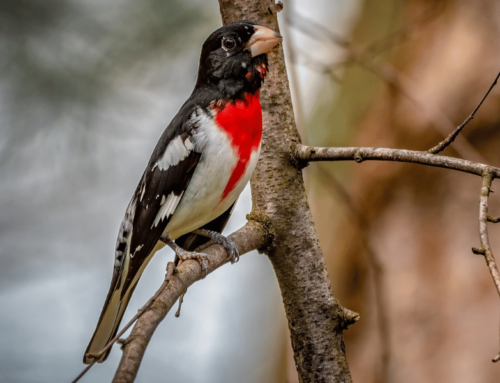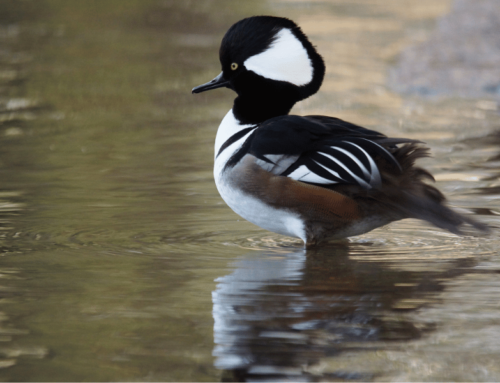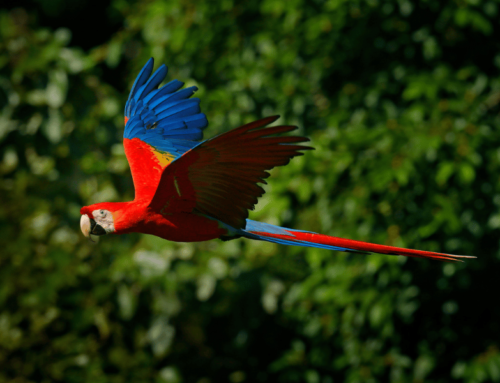
The Pileated Woodpecker is the largest extant woodpecker in North America and these birdwatching tips will help you find them more frequently. This woodpecker is a great bird to look for, as its behavior is interesting and has an impressive size.
This blog is all about birdwatching tips for seeing the pileated woodpecker.
9 birdwatching tips for the pileated woodpecker
Background
The pileated woodpecker is a large woodpecker that can be found in North America. Like other woodpeckers, it gets its food from drilling into wood to get to insects.
It’s closest living relatives are the black woodpecker of Europe and the White-Bellied Woodpecker of Asia. There are currently two subspecies: the northern pileated woodpecker and the southern. The southern subspecies is found predominantly in the southern United States. The northern subspecies is found elsewhere and is larger on average.
This bird belongs to the Dryocopus genus. This group includes five other species, including the lineated woodpecker, black-bodied woodpecker and the Andaman woodpecker. All species in this genus are considered large and powerful compared to other woodpecker families and they all specialize in eating similar prey.
This bird has been increasing in numbers for years now. Finding them today will prove to be easier than before. Current estimates put them at over 2.5 million birds.
They are a non-migratory bird and their range is static.
Appearance
You can recognize the pileated woodpecker by how much larger it is compared to the average woodpecker. It reaches up to 49 centimeters (19 inches) in length. Their size is around that of a crow. Their bills are dark and long, being around the same length as their heads.
This woodpecker is mostly black. Both sexes have a prominent red crest along with white lines that run down their necks. Although they look very similar, there are differences between males and females. The red crests of the males run from the back of their heads to the start of their bills. The crest on the females stops before reaching the bill. The males also have a small strip of red on their cheeks.
In flight, you’ll see white on the ventral and dorsal side of their wings. Their flying can be recognized by their full, rowing wingbeats.
Diet
When looking for woodpeckers, you are obviously going to be looking through the trees for them. They will mostly be looking for ants and insect larvae that can be found inside the wood of trees. Carpenter ants are one of their target prey items. If you can find areas with carpenter ants, then the pileated woodpeckers are likely to show up in short time. Although they spend much of their time in the trees, you can also see them on the ground foraging as well, especially on fallen trees and logs.
When you see large, oval-shaped holes in trees, you’ll know that pileated woodpeckers are likely the culprit and are possibly in the area. These holes can be quite large, with cavities reaching up to 3 feet (91 centimeters) in height frequently.
Even though they are largely insectivores, they also eat nuts and fruits.
These birds are diurnal, so any time after sunrise and before dusk make great times to look for them.
Call
The pileated woodpecker has a high-pitched piping-like call. Listen to the following audio to get familiar with it before you go out in the field:
Besides pecking on wood to get to food, these birds also drum on wood to attract mates and defend their territory.
Habitat and Range
The pileated woodpecker can be found throughout much of Canada, the eastern half of the United States and the northern parts of the west coast. The following picture shows their year-round range.

This woodpecker is found in forested areas in its range. They have a preference for mature woodlands with larger trees. Today, they are most common in the southeastern parts of the United States.
Nests
Pileated woodpeckers like to nest inside dead trees. More often, their nests have multiple entrances. These nests are only used for one brood and then the birds abandon it. These nests are usually 15 to 70 feet above the ground. A good sign that a hole in a tree is a pileated woodpecker’s nest, is a pile of wood chips at the base of the tree.
When these nest cavities are abandoned, they are taken over by other animals, especially other birds. This is one reason why pileated woodpeckers are an important part of the north American ecosystem.
A pair of birds will have a large territory and won’t tolerate other paired birds foraging in their space.

Male pileated woodpecker feeding a nestling
Adaptability
One of the reasons these birds are making a comeback is their ability to adapt to new environments. Most mated pairs of pileated woodpeckers use at least 300 acres of land to support their brood. However, a recent pair nested in a tree in a 74-acre forest on Staten Island in New York City. This shows that this bird is resilient and likely to continue moving into new territory.
Pileated woodpeckers are also feeding on the larvae of the invasive emerald ash borer, making them one of the best natural defenses North America has against invasive beetles of this sort.
National Parks with Pileated Woodpeckers
You can see this woodpecker anywhere in its year-round range. However, going to a national park can give you a safer and easier destination to go to for birdwatching. The following parks are known to have pileated woodpeckers:
Crater Lake National Park
Lassen Volcanic National Park
Lava Beds National Monument
Oregon Caves National Monument and Preserve
Redwood National and State Parks
Whiskeytown National Recreation Area
Out of all these national parks, none are known for having pileated woodpeckers as a constant, reliable resident. So, any of them would make a good choice if you were looking to visit a national park first and see a pileated woodpecker second.
Backyard Feeding
If you live in or are planning on moving into the range of the pileated woodpecker, then you can see them without leaving your property. They can make their way into your backyard if you’re willing to put up a feeder. Suet feeders are a good bet for attracting these woodpeckers. Feeders with nuts and seeds can work as well.
Pileated woodpeckers will also use nest boxes but this is not a common activity for them. Get a larger nest box if you are trying to get them to nest on your property. You’re better off using feeders to see these birds.
Similarity to the Ivory-Billed Woodpecker
The Pileated Woodpecker looks very similar to the possibly extinct ivory-billed woodpecker. Since it’s still not clear if the Ivory-billed woodpecker is actually extinct or not, the pileated woodpecker often gets mistaken as one. Both birds have an overlapping range.
On the off chance that you encounter an ivory-billed woodpecker, it’s good to know the differences. Besides the coloration, the ivory-billed is larger than the pileated. The next most obvious difference is the heavier presence of white on the trailing edges of the wings of the ivory-billed woodpecker.

Picture of an ivory-billed woodpecker taken in 1937
There have been a few credible sightings of ivory-billed woodpeckers, but definitive, unambiguous evidence has not been obtained since the 1940s. There are some ornithologists who believe that the bird isn’t extinct.
If you are out birdwatching, and you see a woodpecker that is too big to be a pileated woodpecker, and has white trailing edges on its wings, it might be an ivory-billed.
Birdwatching Tips for its Close Relatives
After seeing the pileated woodpecker on your birdwatching trips, you can now look for some of its close relatives. Two of its closest relatives are the black woodpecker and the white-bellied woodpecker. These two species are different in appearance, however their ecological roles are very similar to the pileated woodpecker’s.
1. White-Bellied Woodpecker
The white-bellied woodpecker is a close relative of and also looks like similar to the pileated woodpecker. It can be found in the tropical areas of India and throughout southeast Asia. Like its North American relative, it has a prominent red crest. Like the name suggests, this bird’s belly is mostly white.
With 14 subspecies of this bird, this species can differ in how much white is present on their abdomen.
2. The Black Woodpecker
This is another large woodpecker and is the biggest woodpecker in all of Europe. It’s found from almost all of the European continent, with the exception of Portugal, Ireland and the U.K. to east Asia. It can be an occasional vagrant in the British Isles and Portugal.
Like the pileated woodpecker, this bird prefers mature forests, where it eats insect larvae and carpenter ants. They have basically filled the exact same ecological niche as the pileated woodpecker but on other continents.
Their bodies are almost all black with the exception of a red spot on their crowns.
Conclusion:
The pileated woodpecker is a large and impressive woodpecker that you can birdwatch for in North America. It’s currently the third largest woodpecker in the world. Follow the birdwatching tips in this blog post and you can increase the number of them you encounter.





